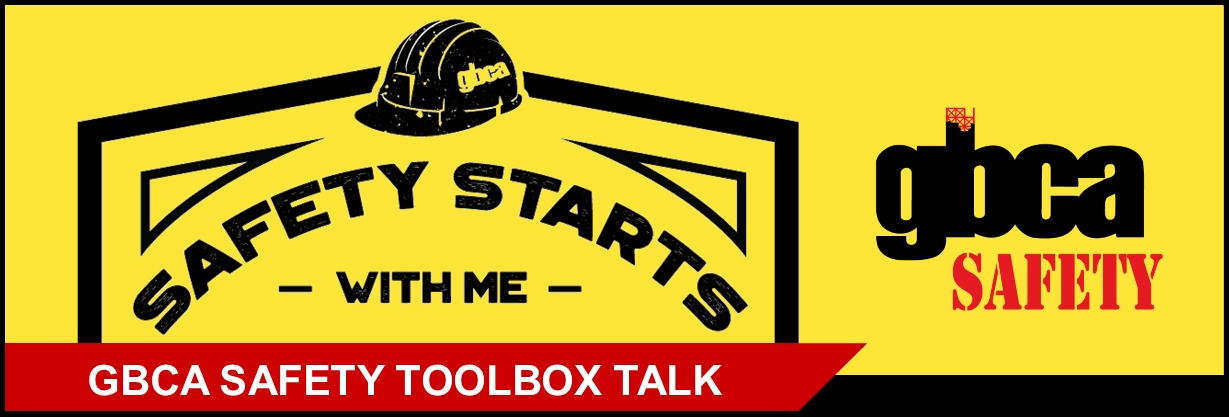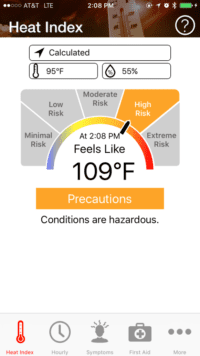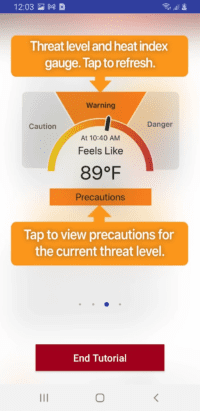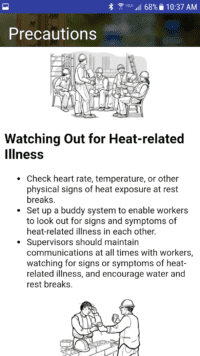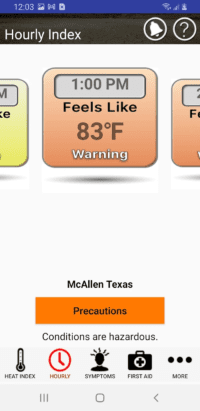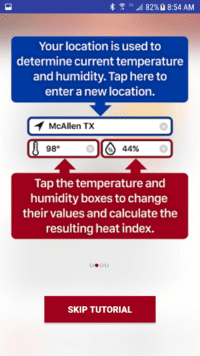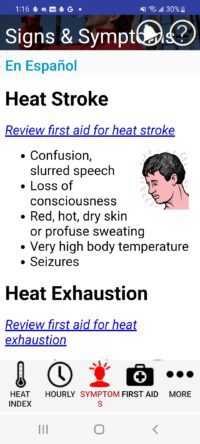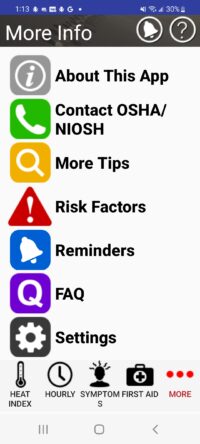This GBCA Safety Toolbox Talk discusses working in the heat and how to check the heat index. This talk also goes into the features of the OSHA NIOSH Heat Safety Tool app. Click below to download the Toolbox Talk as a multi-page handout.
Working in the Heat: The Heat Index
The first step to combatting heat-related illnesses is to be prepared. On hot days, OSHA recommends frequent breaks in a cool or shady environment and drinking water every 20 minutes. OSHA also urges employers to allow new workers to acclimate and build up resistance to the increased temperatures. A recent study of heat-related workplace fatalities found that most occurred during the worker’s first week on the job.
OSHA and the National Institute for Occupational Safety and Health (NIOSH) have developed the Heat Safety Tool to help determine heat risk levels based on the weather. This mobile phone app features real-time heat index and hourly forecasts specific to your location, which are used to calculate the heat index (including how hot it feels) and heat risk to individuals working outdoors. The app also provides recommendations and resources to prevent heat-related illnesses and heat stress. The app is available for iPhone and Android mobile devices.
What is the Heat Index?
The heat index is a measure of how hot it feels when relative humidity is taken into account along with the actual air temperature. Since heat index values were devised for shady, light wind conditions, however, exposure to full sunshine can increase heat index values by up to 15°F.
The National Weather Service uses the heat index values to issue heat alerts to the general public. The OSHA NIOSH Heat Safety Tool modifies the heat index for outdoor worksites, accounting for workers’ activity. The Heat Safety Tool’s heat index takes into account environmental factors as well as metabolic heat associated with physical work, which can cause heat stress.
When to Use the Heat Index
The heat index and wet bulb globe temperature (WBGT) both measure environmental temperature. NIOSH recommends WBGT to determine the Recommended Exposure Limits (RELs) for acclimatized workers and the Recommended Alert Limits (RALs) for unacclimatized workers in hot environments. WBGT is determined by measuring dry air
temperature, humidity, and radiant energy; and is used to calculate a thermal load on the worker.
Many workers and small businesses don’t have the resources and equipment to determine WBGT. Using the heat index is a viable alternative for determining protocols for working in the heat. While WBGT is commonly used in industrial settings, the heat index is a good measurement for outdoor work environments without additional radiant heat sources, such as fires or hot machinery.
OSHA NIOSH Heat Safety Tool App Features
Heat Index – If your location services is enabled, the temperature and humidity data will automatically download and the app will display the current heat index and associated heat risk levels based on your geographical location.
The “Precautions” button leads to risk level-specific recommendations.
Hourly Heat Index Forecast – If you are interested in planning your work activities for the entire shift around the heat index, there is an hourly feature that will allow you to scroll through and determine the hottest hours of the day along with the corresponding risk level and precautions.
You can also edit your location, temperature, and humidity for more accurate calculations, particularly when in variable conditions.
Symptoms and First Aid – At the bottom of your app screen you will always have easy access to heat-related illness symptoms and first aid.
In the symptoms tab, remind yourself of symptoms of heat-related illnesses including heat stroke, heat exhaustion, rhabdomyolysis, heat cramps, and heat rash. In the first aid tab, learn how to respond to and initially treat heat-related illnesses.
More – The “More Tips” provides information about being prepared for emergencies, training, acclimatization, hydration, monitoring workers for heat-related illness, and breaks. There is also a list of risk factors associated with heat-related illnesses.
Under the Occupational Safety and Health Act of 1970, employers are responsible for providing safe and healthful workplaces for their employees. OSHA supports employers by setting standards and providing training, educational resources, and assistance.
Download the OSHA NIOSH Heat Safety Tool:
Remember to record the attendees of your toolbox talk!
Access GBCA’s full library of toolbox talks:

